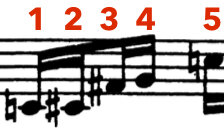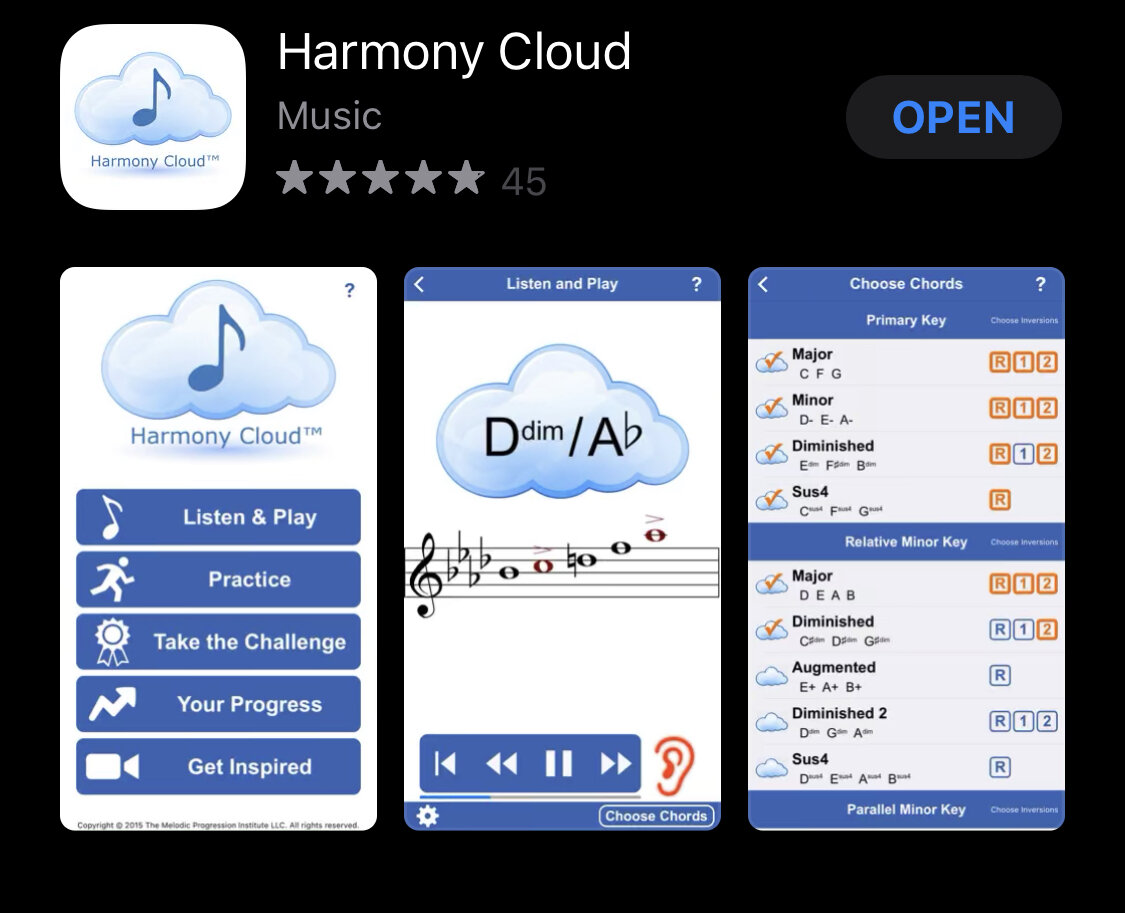Creative Practicing | Slonimsky and Green
Warming up every day is CRUCIAL. If nothing else, just for consistency in your daily life and to train your muscles and brain that work gets done every day. Even if you can’t get to repertoire, a good warmup is essential to a balanced day.
Pre-requisites:
Know your major and minor scales pretty well.
Be able to transpose your ideas (even if this takes you a while, the skill is necessary)
Own these two books:
For me, learning has three parts:
(click each word to be taken to that part in the text, or just keep scrolling)
Analysis
(breaking things down)
Synthesis
(putting them back together in the same or new ways)
Application
(putting those chunks into context of other chunks, style, history, musical ensemble, or many more things)
Analysis
Let’s make the GHG Lesson 1, Exercise 1 into numbers instead of absolute notes:
Now it’s probably a good idea to play through the GHG Lesson 1, Exercise 1 a few times with this new way of thinking…
Synthesis
Since you’re at your instrument, now crack open the Slonimsky book to the first page and play through line 1.
Like we did with the Green exercise, we can apply numbers to the pitches of Slonimsky too. The order of the Slonimsky pitches in line 1 is:
If we map the Slonimsky pitches onto Green Lesson 1, Exercise 1. Our combined exercise will be:
Continue learning all of the lines on Slonimsky’s first page (the full section is titled “Interpolation of One Note”). There are four lines in this section, each starting on C. Try to notice the pattern of how Slonimsky organized these scales!
Transpose each of these Slonimsky lines to all 12 keys You can progress up chromatically or through the circle of 4ths, or any other of your preferred methods to learn something in all keys.
If you stopped there, you’d be exhausted I’m sure! But if you want another step, here’s what I do!
Application
To immediately use my new scale to make music, I use improvisation and Stefon Harris’ Harmony Cloud app. If you want to know more about some settings in the app, click the button below.
At first I’ll use the app just to cycle through roots and give a harmonic pad to my improvisations. I will play only the Slonimsky Line 1 collection to start, but transpose the starting pitch depending on the root of the chord that is played in the Harmony Cloud App. For instance, if a D+ (D augmented) harmony comes up, I would play this collection, even though I may not use these notes for this chord in a traditional jazz/bebop context.
Do this now (i.e. APPLY it) before reading further. I’m patient. I’ll wait.
Once I feel comfortable transposing roots, now it is time to assign each line to a different chord quality. Here’s what I chose, but this is by no means an attempt to limit you!
Harmony Cloud Chord Quality
Major
Minor
Augmented
Dimninished
Slonimsky Line Number to Use
Line 2 or 4
Line 1 or 3
Line 2 or 4
Line 1 or 3
In the future you can keep working through the Green Lesson 1 exercises and apply the “Interpolations of One Note” to them. You can also progress in the Slonimsky book as you stay on Green Lesson 1, Exercise 1. Additionally, come up with creative ways to use this on your own!
This work will help you technically as well as mentally. Try to find new ways of using your favorite materials and your creativity will blossom!






